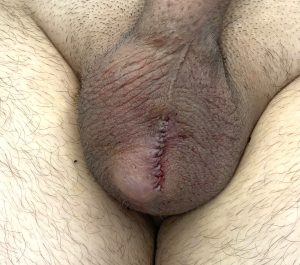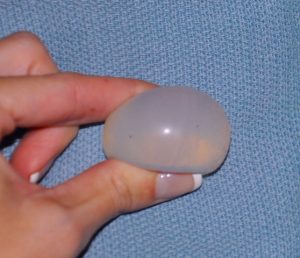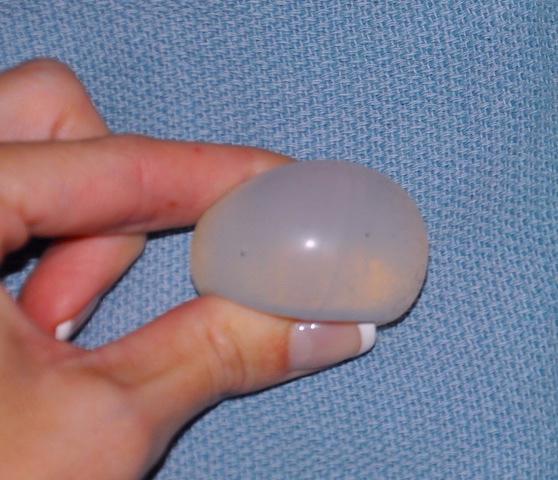Testicle implants are an effective method for reconstruction of a previously removed testicle. Whether the testicle was removed months or years ago a testicle implant can be successfully placed. In almost all cases that I have seen the removed testicle is taken from a high scrotal or inguinal incision. While an existing incision is always tempting to use secondarily, and it certainly can be, it is not the best point of access for implant placement.
The goal of any testicle replacement is a soft, freely moveable and low hanging implant. Not as important but still relevant is to not create ay additional adverse scarring. I find that the best incision to use is one located in the midline raphe of the scrotum. Also known as part of the perineal raphe this is the visible line that actually runs from the anus across the perineum and up through the scrotum and onto the ventral base of the penis in males. It is part of normal development of the penis and scrotum which closes toward the midline and fuses in utero. Underneath the raphe in the scrotum it continues as a midline septum separating the two testicles.


It is important to remember with any implant that there is a natural tendency for an implant to potentially migrate back towards the path of its insertion. This is the direction of least resistance since the tissues have been disrupted. With a primary goal of not having a testicle implant that sits too high the merit of having an incision close to where the implant should sit helps fulfill that goal.
Dr. Barry Eppley
Indianapolis, Indiana



